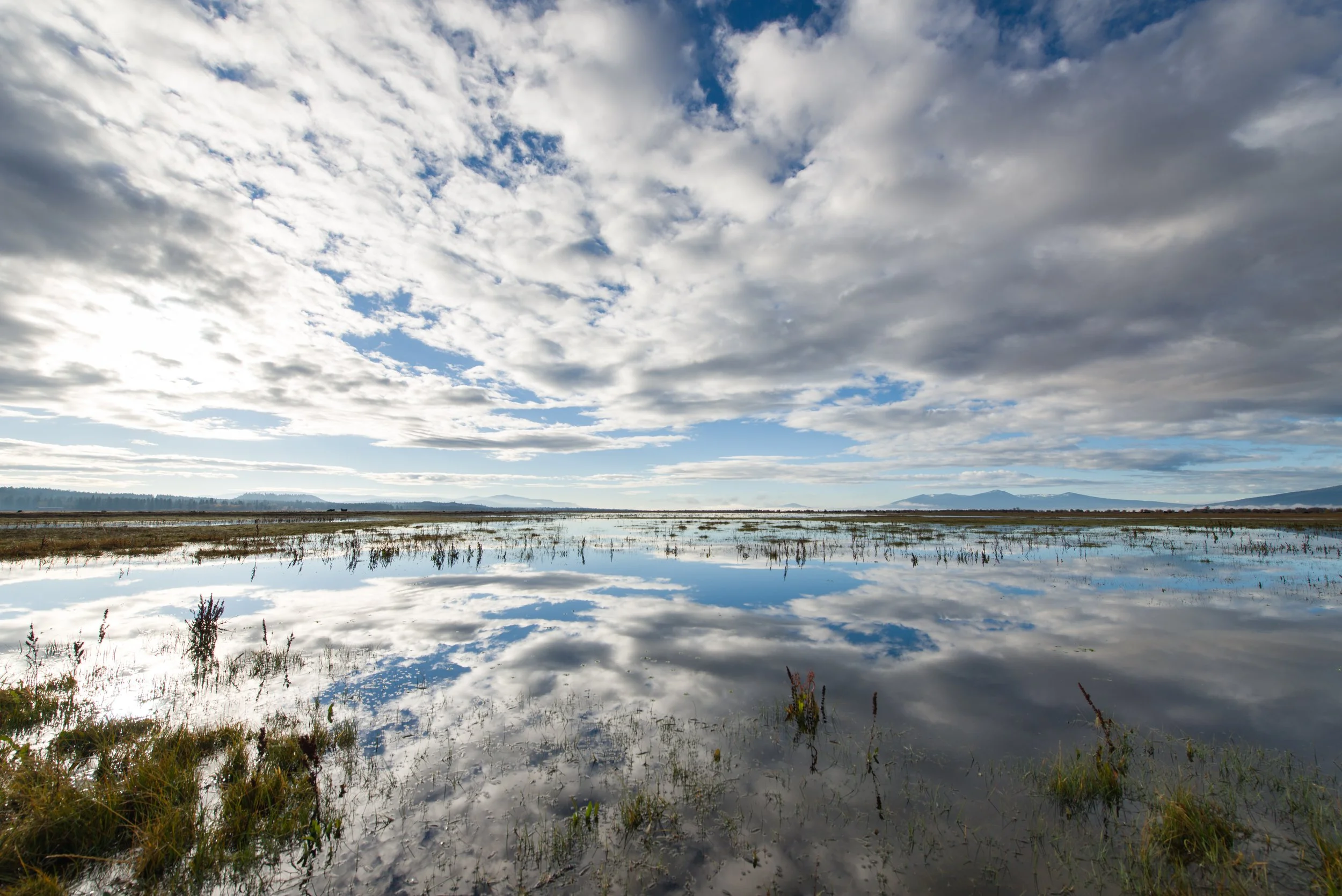Supporting Wildlife in the Klamath Basin
Rancher collaborates with public agencies to send water to critical bird habitat
This post has been updated to improve clarity.
A recently launched pilot program is giving a window into what a new focused water market could look like in the Upper Klamath Basin. The effort is demonstrating a potential mechanism for addressing water management challenges. The pilot transaction provides much needed conservation and wildlife benefits at Lower Klamath National Wildlife Refuge, which is managed by the U.S. Fish and Wildlife Service.
Agency Ranch is the first operation to utilize the mechanism, voluntarily selling some of the water from their cattle ranching operation in the Wood River Valley to help ensure the refuge does not go dry during periods when there is more demand than available water to meet all competing demands. The ranch is able to maintain a productive cattle operation while using less of its water and providing more to downstream uses.
Migratory bird wetland in the Upper Klamath Basin.
Klamath Water Right Claims: “First in time, first in right”
The Klamath Basin has several national wildlife refuges. The Lower Klamath National Wildlife Refuge is one of them, and it provides important habitat for migratory birds on the Pacific Flyway – shorebirds, waterfowl, eagles, and more. It was the nation’s first wildlife refuge, and it’s essential for the survival of these birds. In 2021, it went completely dry for the first time ever due to insufficient supply resulting from drought.
Like most places in the western U.S., water rights claims in the Klamath Basin are managed on a “first in time, first in right” basis. The priority date of each water right claim has been adjudicated by the Oregon Water Resources Department and is currently under consideration by the Klamath County Circuit Court. The refuge has a junior right claim behind the Klamath Project irrigators. These are farmers who receive water from the Klamath Irrigation Project, a system built by the U.S. Bureau of Reclamation to divert and deliver water from Upper Klamath Lake and other locations. Project farmers have a 1905 priority date, and the refuge has a 1908 priority date. The Agency Ranch water right claim is above Klamath Lake, upstream of both the federal project and the refuge, and dates back to 1864. This makes it senior to all claims in the basin except those held by the Klamath Tribes (who have a time immemorial claim). Agency Ranch offered to permanently sell its water right claim to ensure a portion of its water is delivered to the refuge in perpetuity to benefit this very important bird habitat.
There are three primary users of the water in the Upper Klamath Basin: the rivers and lakes (as described in the Klamath Tribes time immemorial water right claims), farmers and ranchers (both in and out of the Klamath Irrigation Project), and the wildlife refuges. The refuges are not often dry; in fact, 2021 was the first year it had ever been dry in 1,000 years. There was a severe drought that year, and the dry conditions led to an outbreak of avian botulism that killed an estimated 75,000 birds. Water markets, which are systems where holders of senior water claims have the opportunity to sell their claim to more junior users, are a logical tool to help avert similar crises in the future. The Agency Ranch transaction is the first transaction to benefit the refuge, and can be seen as a pilot project intended to show it can be done.
With the refuge water right claim being last in line, it lost out in 2021 and as a result the birds suffered. Now, the U.S. Fish and Wildlife Service, which acquired the Agency Ranch water right claim, can put its water in the lake and send a portion of it to the refuge. The remainder of the water adds to the overall supply of water in Upper Klamath Lake.
The Legal Framework
The Oregon Water Resources Department had to approve the temporary transfer of the Agency Ranch water right claim to show that some of its water could benefit the refuge. Then the Service had to go through an extensive review to buy it for the refuge. There was public comment, scientific analysis, and due diligence to validate the transaction.
This project would not have been possible without the perseverance of landowners and support from conservation groups and the federal government. We believe additional opportunities exist to expand creative solutions to achieve balance in the future for working lands, fish, and wildlife in the Klamath Basin and look forward to working with landowners, conservation partners, and state and federal agencies in the years to come.

